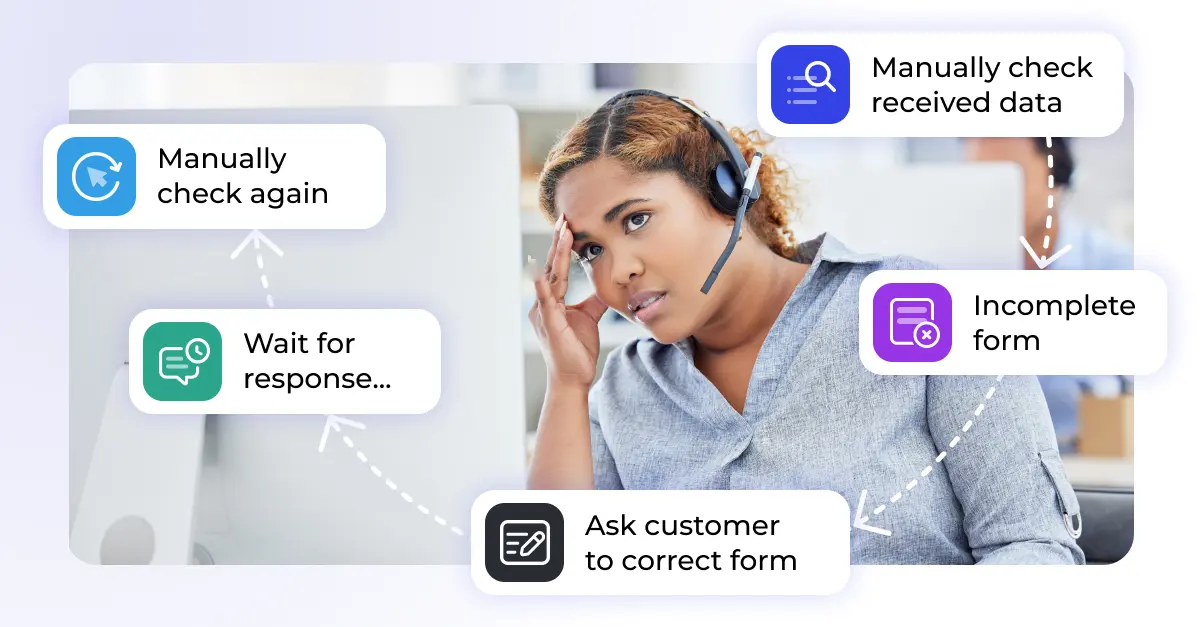Customer feedback has never been more diverse or more influential. Studies show 65% of customers expect businesses to adapt to their needs. From social media mentions to in-app surveys and review platforms, customers today then share their opinions across multiple channels – often in real time. For customer service and experience teams, monitoring this feedback is essential to understanding satisfaction, identifying problems early, and guiding strategic improvements.
This guide explores proven methods for collecting, analysing, and acting on feedback in 2025, with practical examples and key metrics every team should know.
Why monitoring customer feedback matters
According to a Microsoft study, 77% of customers view brands more favorably if they proactively request and act on customer feedback. Monitoring feedback helps you:
- Identify pain points before they escalate into churn:
- Pinpoint areas that need improvement to better serve your customers.
- You may find issues with your products, services, policies, or processes that you were previously unaware of.
- For instance, the average large e-commerce site can gain a 35.26% increase in conversion rate through a better checkout design.
- Improve satisfaction and loyalty:
- Show your customers that their voices matter. This helps build goodwill and strengthen relationships.
- Satisfied, loyal customers are more likely to make repeat purchases and recommend your business to others.
- Discover opportunities for product or service enhancements:
- Feedback can inspire new ideas for features, offerings, or programs that better meet customer needs.
- Monitoring feedback over time also allows you to see how customer opinions change as you make improvements.
- Guide better resource allocation and investment decisions:
- Feedback provides information that helps guide strategic decisions and planning.
- You can use feedback to determine how to allocate resources or which new markets to target.
Example: Correcting common checkout user experience (UX) issues can lift conversion rates by up to 35% for large e-commerce sites.
Clearly, customer feedback is a vital tool for building a successful business. Regularly monitoring feedback and taking action based on the results will help boost customer satisfaction, inform better decision-making, and drive continuous improvement. Make customer feedback a priority, and you’ll gain valuable insights to shape a positive experience for your audience.
For an in-depth look at how AI can actively improve satisfaction, see AI for Customer Satisfaction
Methods and tools for monitoring feedback
Automated methods
- Social listening: Tools like Brandwatch, Talkwalker or Sprout Social track mentions, hashtags, and conversations about your brand on platforms such as X, Facebook, Instagram, or LinkedIn.
- Online surveys: Solutions like Typeform, Qualtrics, or Zendesk’s native surveys collect structured feedback at key points in the customer journey.
- Sentiment analysis: AI-powered tools, including Zendesk AI features, categorise feedback as positive, negative, or neutral, and reveal emerging trends.
Manual methods
- Customer interviews and focus groups: Provide deeper, qualitative insights into motivations and expectations.
- Community forums and help centres: Monitoring and engaging in your own and third-party communities can uncover recurring issues.
- Review site monitoring: Analysing Google reviews, Trustpilot, or app store feedback for recurring themes.
Baymard Institute’s research indicates that optimizing the checkout UX could boost conversion rates by ~35% on average for large e‑tailers” (creatuity.com).
Key metrics for customer feedback: overview
| Metric | What it measures | Target benchmark |
|---|
| NPS (Net Promoter Score) | Willingness to recommend | 50 = average, 70+ excellent |
| CSAT (Customer Satisfaction) | Satisfaction after an interaction or period | 80%+ in most industries |
| CES (Customer Effort Score) | Ease of completing a task or resolving an issue | Lower scores = better |
| CLV (Customer Lifetime Value) | Total projected value of a customer over their relationship | Higher CLV = higher retention priority |
| Churn rate | % of customers lost in a given period | <5% ideal in SaaS |
Tip: Connecting these metrics to ROI is essential. Learn how in GenAI for ROI.
Customer feedback metrics: A quick guide
Net Promoter Score (NPS)
The loyalty litmus test: One simple question reveals customer advocacy potential.
Ask: “How likely are you to recommend us to a friend or colleague?” (0-10 scale)
Customer segments:
- Promoters (9-10): Your brand evangelists who drive organic growth
- Passives (7-8): Satisfied but vulnerable to competitive offers
- Detractors (0-6): Unhappy customers who may damage your reputation
Calculation: % Promoters minus % Detractors
Benchmark: 50 = industry average, 70+ = world-class
Pro tip: Don’t just track the score—analyze the “why” behind ratings. Comments from Detractors and Passives reveal actionable improvement areas.
Customer Satisfaction Score (CSAT)
The immediate satisfaction pulse measuring contentment after specific interactions.
Typically uses 1-5 or 1-10 rating scales to capture overall satisfaction with your company, product, or service experience.
Why it matters: High CSAT scores correlate directly with customer loyalty and repeat business. It’s your early warning system for service issues.
Benchmark: 80%+ across most industries
Best practice: Deploy immediately after key touchpoints (support calls, purchases, onboarding) for real-time insights.
Customer Effort Score (CES)
The friction finder: Measures how easy or difficult it was for customers to complete tasks or resolve issues.
Lower effort scores indicate smoother customer journeys, while high effort often leads to frustration and churn—even when the outcome is positive.
Key insight: Customers are four times more likely to become disloyal after a high-effort experience, regardless of problem resolution.
Implementation: Focus on reducing steps, wait times, and handoffs in your customer processes.
Customer Lifetime Value (CLV)
The relationship revenue calculator: Predicts total value a customer will generate over their entire relationship with your company.
Factors in average purchase amount, buying frequency, gross margin, and expected relationship duration. High CLV customers deserve premium attention and personalized experiences.
Strategic value:
- Guides customer acquisition spending limits
- Identifies priority segments for retention programs
- Informs resource allocation decisions
Remember: Retaining existing customers typically costs 5x less than acquiring new ones.
Churn Rate
The retention reality check: Percentage of customers who stop using your product or service during a specific period.
High churn rates signal you’re losing customers faster than you can replace them, directly threatening revenue and growth momentum.
Calculation: (Customers lost ÷ Total customers at period start) × 100
Industry benchmarks:
- SaaS: <5% monthly is excellent
- Subscription services: <10% annually
- E-commerce: varies widely by sector
Action items: Track monthly/quarterly, identify common churn triggers, and proactively engage at-risk customers with targeted retention offers.
Best practices for monitoring customer feedback
- Establish a feedback loop – Collect, analyse, act, and follow up with customers to show their input matters.
- Use multiple sources – Combining surveys, reviews, and social listening gives a more complete picture.
- Prioritise actionable insights – Focus on issues that impact retention, satisfaction, or revenue the most.
- Share insights across teams – Product, marketing, and customer support should all have access to feedback findings.
From monitoring to improvement – how Knots can help
Monitoring feedback is the first step. Real results come when insights are turned into action. Knots offers solutions to help you process, organise, and act on feedback efficiently:
- Data Validation: Ensure your feedback data is complete, accurate, and ready for analysis.
- Preprocessing: Structure unformatted feedback, documents, or attachments so they can be analysed automatically, including OCR for scanned or image-based content.
- AI for Customer Satisfaction: Respond to customer sentiment in real time and proactively improve satisfaction.
- GenAI for ROI: Identify which feedback-driven changes deliver the greatest business impact.
Key takeaways
- Monitoring customer feedback is essential to understand satisfaction, identify pain points, and guide improvements.
- Combining automated tools (e.g. social listening, sentiment analysis) with manual methods (e.g. interviews, review analysis) provides the most complete picture.
- Metrics like NPS, CSAT, CES, CLV, and churn rate help quantify and track customer sentiment over time.
- Acting on feedback improves loyalty, retention, and can drive measurable results — such as up to 35% higher conversions through UX improvements.
- Knots solutions help teams transform feedback insights into action, from data validation to AI for Customer Satisfaction.
Frequently asked questions about monitoring customer feedback
What is the best way to monitor customer feedback?
The most effective strategy combines automated methods like sentiment analysis, social listening, and online surveys with manual approaches such as customer interviews and forum engagement. Using multiple data sources ensures a more accurate view of customer sentiment.
Which tools are best for sentiment analysis in customer feedback?
Options include Brandwatch, Talkwalker, Sprout Social, and Zendesk AI. These platforms use NLP for sentiment analysis to categorise feedback as positive, negative, or neutral.
How often should businesses review customer feedback?
Operational feedback from active channels should be checked daily to resolve urgent issues quickly. Trend analysis for strategic decision-making is best done monthly or quarterly.
Why is customer feedback important for business growth?
Feedback identifies strengths to build on and weaknesses to address. Acting on feedback strengthens loyalty and can deliver measurable ROI — for example with GenAI for ROI calculations.
What metrics are most useful for tracking customer feedback?
Key metrics include NPS, CSAT, CES, CLV, and churn rate. Learn how customer experience insights can be linked to these KPIs for better decision-making.








